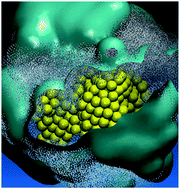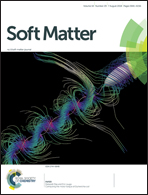Non-monotonic variations of the nucleation free energy in a glass-forming ultra-soft particles fluid
Abstract
Using molecular dynamics simulation, we study the impact of the degree of supercooling on the crystal nucleation of ultra-soft particles, modeled with the Gaussian core potential. Focusing on systems with a high number density, our simulations reveal dramatically different behaviors as the degree of supercooling is varied. In the moderate supercooling regime, crystal nucleation proceeds as expected from classical nucleation theory, with a decrease in the free energy of nucleation, as well as in the size of the critical nucleus, as supercooling is increased. On the other hand, in the large supercooling regime, we observe an unusual reversal of behavior with an increase in the free energy of nucleation and in the critical size, as supercooling is increased. This unexpected result is analyzed in terms of the interplay between the glass transition and the crystal nucleation process. Specifically, medium range order crystal-like domains, with structural features different from that of the crystal nucleus, are found to form throughout the system when the supercooling is very large. These, in turn, play a pivotal role in the increase in the free energy of nucleation, as well as in the critical size, as the temperature gets closer to the glass transition.



 Please wait while we load your content...
Please wait while we load your content...